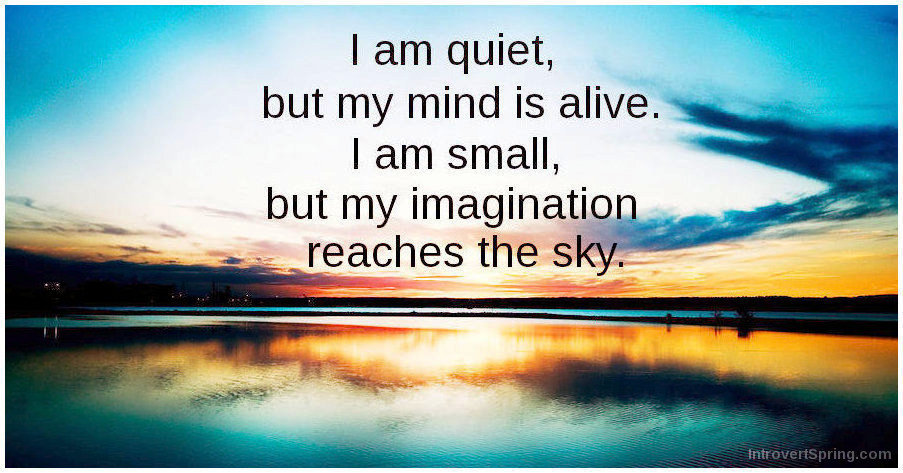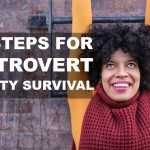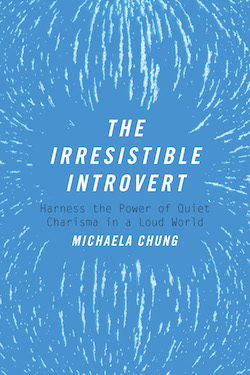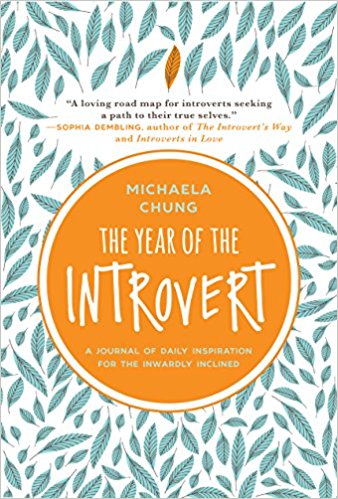The following is an excerpt from my ebook, The Introvert Revolution:
On August 28th, 1963, Martin Luther King, Jr. uttered four words that the world will never forget: “I have a dream.” He didn’t say that he had a plan of action or a five-step outline for success. With sincere emotion and unwavering conviction, Martin Luther King told the world that he had a dream.
King’s speech is widely considered the best American speech of the 20th century. Although it had several components, the “I have a dream” section most deeply resonated with listeners. The 250,000 plus supporters that heard King’s address could identify with his message because they, too, had a dream.
Like King and his supporters, introverts are dreamers. We spend a great deal of our time inhabiting the realm of thoughts, ideas and fantasies. We are the ones who are often in our heads. We find pleasure and refuge in our imagination. This habit of constantly thinking elicits criticism from others. “Get your head out of the clouds,” they tell us. “Live in the moment,” they say.
To dream is to live
But to dream is to live. Our world is created first with our thoughts. Introverts might be quiet, but our mind is alive. We are small, but our imagination reaches the sky.
To dream is to harness the mystical powers of creativity. Letting our mind wonder gives the subconscious time to make connections and find solutions. It is for this reason that Woody Allen comes up with his best ideas in the shower. It is why some of the greatest writers of our time use exercise as part of their creative process. When we give ourselves freedom to daydream, we give wings to our best ideas.
Daydreaming can also help us to make connections between past experiences and present circumstances. As we do this, we begin to gain new insights. We are able to delve beyond superficial understanding and uncover the deeper meaning beneath each experience.
To dream is to touch upon something bigger than us. We grasp onto the edges of a collective vision that is catapulting the world toward a new direction. We see our secret dreams embodied by others who share our cause. With them, we are carried forward by the prospect of a better tomorrow.
Scientific evidence
Neuroscientists have found evidence that daydreaming facilitates self-reflection, creativity, problem solving and learning. Three styles of daydreaming have been identified: poor attentional control, guilty-dysphoric daydreaming and positive constructive daydreaming. Indulging in the last-mentioned style results in the most tangible benefits.
In a recent paper, entitled “Ode to Positive Constructive Daydreaming”, published in the journal Frontiers in Psychology, writer Rebecca McMillan and NYU psychologist, Scott Kaufman, explore the positive aspects of positive constructive daydreaming. They note that mind wandering can be a voluntary act, which yields immediate rewards. The authors explain:
“Individuals can choose to disengage from external tasks, decoupling attention, in order to pursue an internal stream of thought that they expect to pay off in some way. The pay off may be immediate, coming in the form of pleasing reverie, insight, or new synthesis of material, or it may be more distant as in rehearsing upcoming scenarios or projecting oneself forward in time to a desired outcome.”
An introvert’s dream
As introverts, our dream is simple; we have a dream that we will be able to keep dreaming.
Without fear of judgment, criticism or sideways glances, we want to continue exploring our imagination. We want to close the door. We want to nightdream and daydream. We want to dive deep into our own thoughts and explore the universe inside our head.
And when we come up for air, we want to share our dreams with the world. But instead of listening, society bombards us with the message that we need to change. It tears us from our thoughts, and drowns out our dreams with the sound of popular opinion.
So, we continue to dream that the world will let us dream …
Click here to read more.











